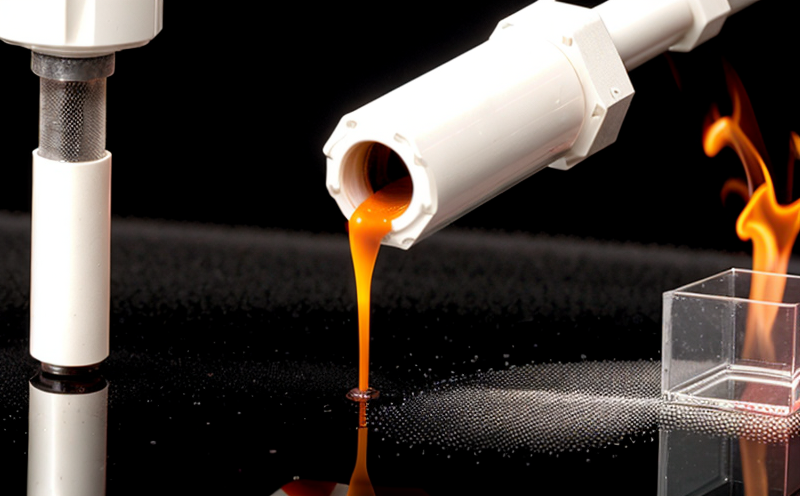Nanomaterial Stability & Degradation Testing
The testing of nanomaterial stability and degradation is critical in ensuring the safety, efficacy, and environmental impact of nanomaterials used across various industries. Nanomaterials are characterized by their small size (typically 1 to 100 nm), which endows them with unique physical, chemical, and biological properties. These properties can vary widely depending on factors such as particle shape, size distribution, surface area, and functional groups.
The stability of nanomaterials is crucial for ensuring their performance in applications ranging from drug delivery systems to composite materials. Degradation testing aims to determine the rate at which a nanomaterial breaks down under specific conditions, providing insights into its longevity and potential environmental impact. Understanding these parameters helps researchers and manufacturers optimize formulations and predict real-world behavior.
Stability tests typically involve exposing nanomaterials to various stressors such as temperature, humidity, light, and chemical agents. Degradation testing often employs accelerated aging techniques that mimic long-term exposure in a controlled environment. This approach allows for the identification of potential degradation pathways and the development of strategies to enhance stability.
For quality managers and compliance officers, understanding these tests is essential for ensuring regulatory compliance and product safety. R&D engineers can leverage this knowledge to innovate and improve nanomaterial formulations. Procurement professionals benefit from this information when selecting suppliers who meet rigorous testing standards.
| Applied Standards | Description |
|---|---|
| ISO 17269:2015 | General requirements for the testing and evaluation of nanomaterials |
| ASTM E2843-15 | Standard practice for the accelerated degradation testing of nanomaterials in aqueous suspensions |
| EN 16297:2012 | Guidelines for the characterization of nanomaterials |
The use of international standards ensures consistency and reliability across different testing facilities, facilitating comparisons and ensuring robust data.
- Temperature cycling between -40°C to 125°C
- Air and humidity exposure up to 98% RH at various temperatures
- UV light exposure for simulating sunlight conditions
- Chemical treatments such as acid or base immersion
These tests simulate real-world conditions that nanomaterials might encounter, providing critical data for product development and optimization.
| Use Cases and Application Examples | Description |
|---|---|
| Drug Delivery Systems | Evaluating the stability of nanoparticles used in drug delivery to ensure sustained release properties |
| Composite Materials | Assessing the durability and longevity of nanocomposites used in aerospace or automotive applications |
| Environmental Monitoring | Understanding the fate of nanoparticles released into the environment through wastewater treatment processes |
In drug delivery systems, for instance, stability tests are essential to ensure that nanoparticles do not degrade prematurely before reaching their target. In composite materials, degradation testing helps predict the lifespan of products exposed to extreme conditions. Environmental monitoring applications require understanding how nanoparticles behave in aquatic environments.
For quality managers and compliance officers, these tests provide critical insights into potential risks associated with nanomaterials, enabling informed decision-making regarding product safety and environmental impact.
Applied Standards
| Standard | Description |
|---|---|
| ISO 17269:2015 | General requirements for the testing and evaluation of nanomaterials |
| ASTM E2843-15 | Standard practice for the accelerated degradation testing of nanomaterials in aqueous suspensions |
| EN 16297:2012 | Guidelines for the characterization of nanomaterials |
The application of these standards ensures that tests are conducted under consistent and rigorous conditions, providing reliable data for decision-making.
Quality and Reliability Assurance
- Conducting temperature cycling between -40°C to 125°C
- Air and humidity exposure up to 98% RH at various temperatures
- UV light exposure for simulating sunlight conditions
- Chemical treatments such as acid or base immersion
These tests simulate real-world conditions that nanomaterials might encounter, providing critical data for product development and optimization.
Quality assurance processes include rigorous validation of testing protocols to ensure accuracy and consistency. This includes regular calibration of equipment and training of personnel to follow established procedures.
Use Cases and Application Examples
| Use Case | Description |
|---|---|
| Drug Delivery Systems | Evaluating the stability of nanoparticles used in drug delivery to ensure sustained release properties |
| Composite Materials | Assessing the durability and longevity of nanocomposites used in aerospace or automotive applications |
| Environmental Monitoring | Understanding the fate of nanoparticles released into the environment through wastewater treatment processes |
In drug delivery systems, for instance, stability tests are essential to ensure that nanoparticles do not degrade prematurely before reaching their target. In composite materials, degradation testing helps predict the lifespan of products exposed to extreme conditions. Environmental monitoring applications require understanding how nanoparticles behave in aquatic environments.
These use cases underscore the importance of nanomaterial stability and degradation testing across various industries.





